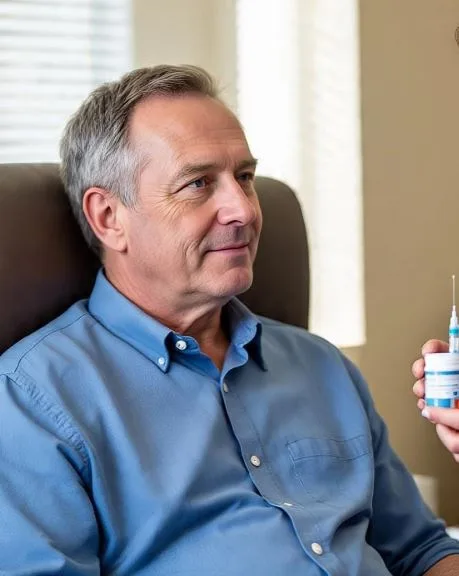What Is Medication-Assisted Treatment in North Dakota?
Medication-assisted treatment, often referred to as MAT, has become one of the most important approaches in the fight against opioid and alcohol use disorders. In recent years, North Dakota has seen rising interest in MAT as a safe and effective way to help individuals manage cravings, stabilize recovery, and rebuild their lives. If you or a loved one is exploring treatment options, understanding how medication-assisted treatment in ND works is essential. This guide will cover the basics of MAT, the medications commonly used, its benefits and challenges, and how to access programs in North Dakota.
Understanding Medication-Assisted Treatment
Medication-assisted treatment is an evidence-based approach that combines prescription medications with counseling and behavioral therapies. The goal is not only to reduce withdrawal symptoms and cravings but also to address the psychological and social aspects of addiction. MAT is widely recognized by leading organizations such as the Substance Abuse and Mental Health Services Administration (SAMHSA) and the Centers for Disease Control and Prevention (CDC) as a highly effective treatment for opioid use disorder and alcohol dependence.
Unlike older models of addiction care that focused on abstinence alone, MAT acknowledges that addiction is a chronic medical condition. Just like diabetes or hypertension may require medication and lifestyle changes, substance use disorders often benefit from the same kind of integrated care. In North Dakota, MAT programs are tailored to meet the needs of individuals in both rural and urban communities, ensuring more people have access to recovery resources.
Common Medications Used in MAT
MAT typically involves one of several FDA-approved medications. Each has a specific role in supporting recovery.
- Methadone: A long-acting opioid agonist that reduces cravings and withdrawal symptoms without producing the euphoric high associated with opioid misuse. Methadone must be administered in specialized clinics.
- Buprenorphine: A partial opioid agonist that helps reduce withdrawal symptoms and cravings. It has a ceiling effect, meaning the risk of misuse and overdose is lower compared to full opioids. Buprenorphine can be prescribed by certified healthcare providers, making it more accessible across ND.
- Naltrexone: An opioid antagonist that blocks the euphoric effects of opioids or alcohol. It can be given as a daily pill or a monthly injection. Because it does not activate opioid receptors, it is a good option for people who have already detoxed.
- Acamprosate and Disulfiram: Medications used to support individuals in recovery from alcohol use disorder. They work by reducing cravings or creating unpleasant reactions when alcohol is consumed.
In North Dakota, these medications are paired with counseling sessions, peer support, and individualized treatment planning to ensure holistic recovery.
Benefits of Medication-Assisted Treatment
The effectiveness of medication-assisted treatment in ND is backed by both research and lived experiences. Some of the primary benefits include:
- Reduced cravings and withdrawal symptoms: MAT allows individuals to stabilize physically, which makes it easier to focus on counseling and life changes.
- Lower risk of relapse: Studies show that MAT significantly reduces relapse rates compared to abstinence-only approaches.
- Improved mental health: Because many people with substance use disorders also struggle with depression, anxiety, or trauma, MAT provides stability that allows for better mental health treatment.
- Decreased risk of overdose: By reducing cravings and blocking the effects of opioids, MAT helps prevent overdoses.
- Increased social stability: Many patients in MAT programs report improved relationships, employment opportunities, and overall quality of life.
For individuals in ND, MAT also helps reduce the stigma associated with addiction by framing it as a medical condition rather than a moral failing.
Challenges and Misconceptions
Despite its proven benefits, medication-assisted treatment in ND and across the United States faces challenges.
- Stigma: Some people believe that using medications like methadone or buprenorphine is just “trading one addiction for another.” In reality, these medications are carefully regulated and used under medical supervision to support recovery.
- Access issues: North Dakota’s rural geography means that some residents must travel long distances to reach clinics or providers offering MAT. Expanding telehealth and mobile clinics is helping bridge this gap.
- Regulatory barriers: Until recently, providers needed special waivers to prescribe buprenorphine, limiting availability. While regulations have eased, awareness among providers is still growing.
- Cost concerns: While many insurance plans and Medicaid cover MAT, not all individuals know how to navigate coverage or financial assistance.
Addressing these barriers is critical to making MAT accessible to all North Dakotans in need.
The Role of Counseling and Support Services
It is important to understand that medication alone is not a cure. Successful MAT programs in North Dakota combine medications with counseling and behavioral therapies. These may include:
- Cognitive Behavioral Therapy (CBT) to address harmful thought patterns.
- Motivational Interviewing (MI) to encourage lasting lifestyle changes.
- Peer recovery support groups that connect individuals with others who share similar experiences.
- Family counseling to rebuild relationships and strengthen support systems.
This comprehensive approach ensures that both the physical and emotional aspects of recovery are addressed.
MAT and Rural Communities in North Dakota
North Dakota faces unique challenges due to its rural population. Many residents live far from major cities where MAT programs are more common. To address this, the state has implemented initiatives such as:
- Expanding telemedicine services to connect patients with providers remotely.
- Supporting mobile clinics that bring care directly to underserved areas.
- Increasing the number of waivered providers who can prescribe buprenorphine.
These efforts are especially important in addressing the opioid epidemic in rural counties, where overdose rates can be disproportionately high.
Success Stories from MAT Programs
Across North Dakota, individuals who participate in MAT have shared success stories that highlight the program’s life-changing potential. Many report that MAT gave them the stability to rebuild careers, reconnect with family, and regain control of their lives. Community organizations and healthcare providers have seen reductions in emergency room visits, hospitalizations, and criminal justice involvement when patients engage in consistent MAT care.
How to Access Medication-Assisted Treatment in ND
If you or a loved one is seeking help, several resources can guide you to MAT programs in North Dakota.
- North Dakota Department of Human Services offers directories of behavioral health and addiction services.
- SAMHSA’s Treatment Locator can help you find local providers offering MAT.
- Community health centers and tribal health services often provide access to MAT along with other medical and social supports.
- Telehealth platforms may allow you to connect with certified providers without leaving your home.
It is important to begin with a consultation to determine which medication is most appropriate, what level of counseling is needed, and how to build a personalized recovery plan.
The Future of MAT in North Dakota
As awareness grows, more North Dakota communities are embracing MAT as a vital part of the healthcare system. With increased funding, expanded provider training, and ongoing public education, access to medication-assisted treatment in ND is improving. Efforts to integrate MAT into primary care settings, emergency departments, and correctional facilities show promise for reaching more individuals at critical points.
The state’s focus on expanding telehealth and addressing stigma is also helping ensure that MAT is not only available but also accepted as a normal and effective form of healthcare. By continuing to invest in these strategies, North Dakota has the opportunity to lead in providing compassionate and effective solutions for addiction recovery.
Conclusion
Medication-assisted treatment in ND represents hope and healing for individuals and families affected by opioid and alcohol use disorders. By combining medications with counseling and support services, MAT addresses the complex realities of addiction while providing a pathway to long-term recovery. While challenges such as stigma and access remain, the growing network of providers, telehealth options, and community support makes treatment more attainable every day.
For North Dakotans struggling with addiction, MAT offers not just symptom relief but also the chance to rebuild lives, strengthen families, and restore communities. Understanding and supporting these programs is an essential step toward a healthier future for the state.






